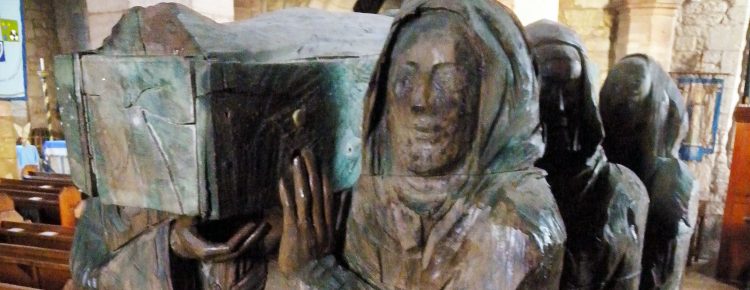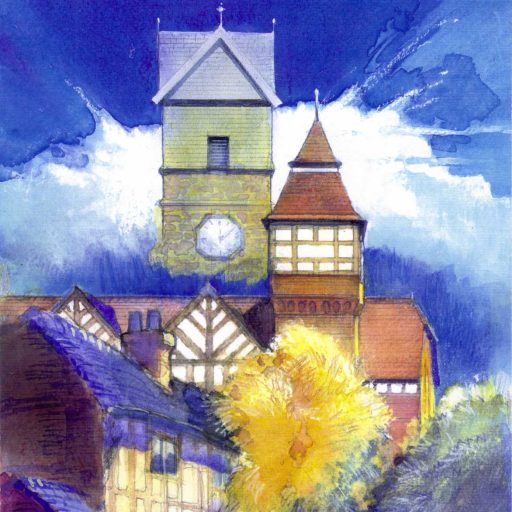Archaeological remains of an Anglo-Saxon church have been discovered on the Holy Island of Lindisfarne in Northumberland. A Heritage Lottery funded community excavation has uncovered sandstone blocks, foundations and an altar base of a church nave and chancel. The remains are located on a ridge on the island called the Heugh and experts are speculating that it was part of the Celtic monastery where St. Aidan raised a wooden church in A.D. 635. Accounts of the excavation are HERE and HERE.
St. Aidan came to the area from the island of Iona in modern day Scotland. He was invited to establish a monastery on Lindisfarne by King and Saint Oswald of Northumbria, whose castle was at nearby Bamburgh. Northumbria at that time stretched from Edinburgh to the Mersey and Humber rivers. It was the first of the great Anglo Saxon kingdoms. The famous St. Cuthbert (c. 634 – 20th March A.D. 687) followed in the footsteps of St. Oswald and St. Aidan and the three saints, Oswald, Aidan and Cuthbert are forever associated with Lindisfarne.
In A. D. 875, after two centuries of peace and civilisation, a large Viking army led by Kind Halfdan landed at Tynemouth causing panic everywhere. The Vikings subsequently destroyed the monastery at Lindisfarne and its original location was lost for over a thousand years, the present day ruins being a much later medieval replacement. In fact, this excavation is the first indication of where it was sited – hence the excitement.
St. Cuthbert had instructed that his remains should never fall into the hands of the Vikings, so the monks hurriedly removed his coffin, the remains of Saint Oswald and other holy relics, including the famous Lindisfarne Gospels and for seven years carried them around the north of England, stopping at various locations in order to keep one step ahead of the invading Vikings.
Middleton juxta Manchester lay in the south of Northumbria and was the most southerly place where St. Cuthbert’s remains, the Lindisfarne Gospels and other relics stayed during this time. Middleton parish church was founded on the site where the monks and their relics stayed, although a chapel may already have existed by that time. The church was originally dedicated to St. Cuthbert but later re-dedicated to the French saint, St. Leonard, following the Norman Conquest. Nevertheless, a side chapel has remained dedicated to St. Cuthbert to this day. It includes the beautiful St. Cuthbert stained glass window.
Note: I am grateful to the research of the late Colin Gilbert for the above information.
If you would like to visit Middleton Parish Church, it is open for visitors every Friday 1-4pm until the end of September and, in addition, Tuesday afternoons in September, and for the Heritage Open Days.
The story of Middleton’s connection with Lindisfarne is explored in the film Medieval Middleton.



